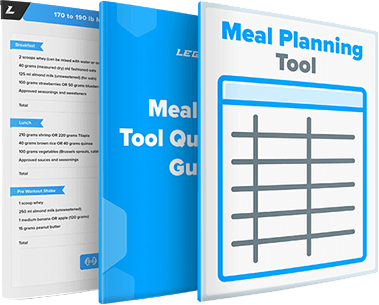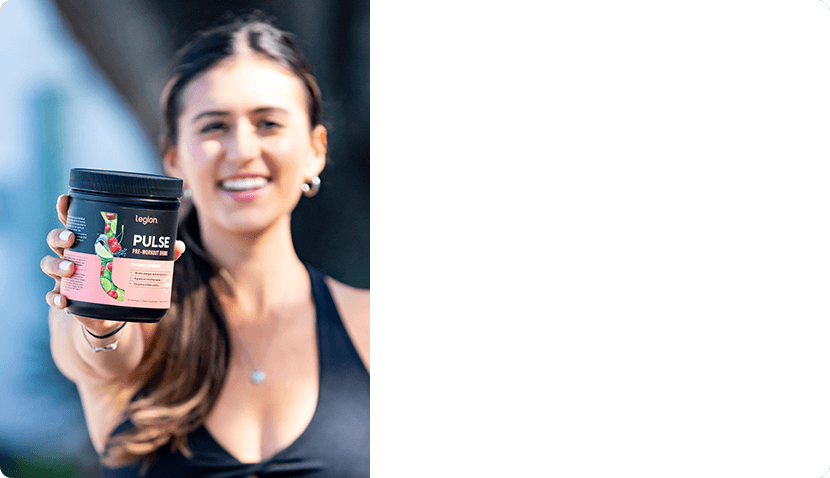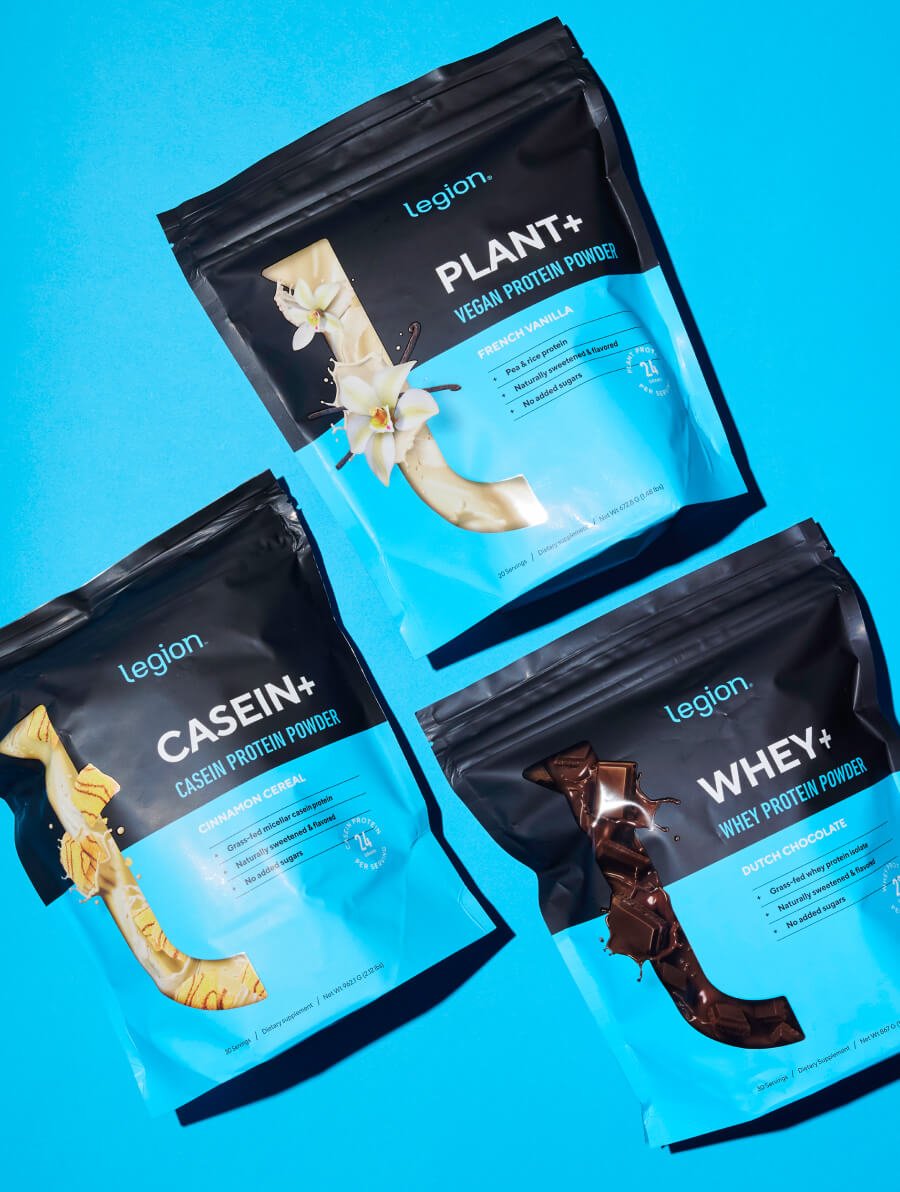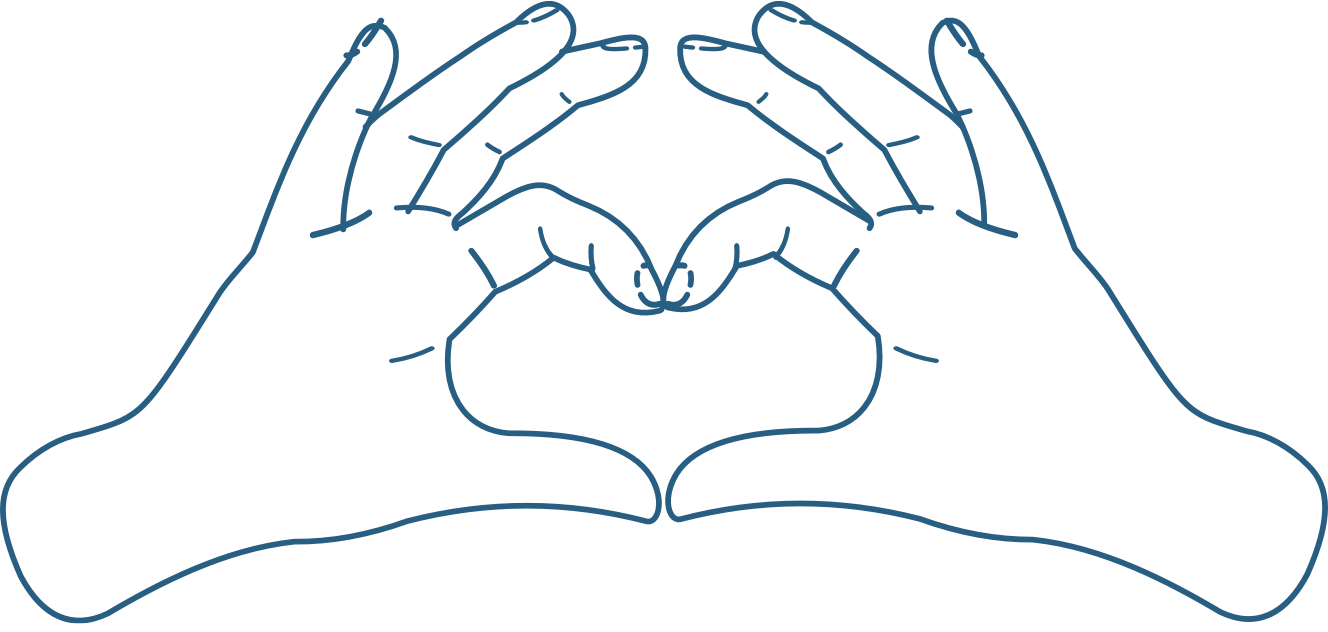Listen on Apple Podcasts | Listen on Spotify | Listen on YouTube
If you’re into weightlifting, you’ve become very acquainted with sore muscles.
You’ve done many reps of the “half-squat-toilet-fall.”
You’ve had the “is this just muscle soreness or am I actually dying?” thoughts.
And maybe you’ve even gone full Stockholm syndrome and now crave the daily debilitation.
Well, I’ve been there, I’ve learned some things, and now I’m going to pass on those lessons.
You see, like many people, I used to think muscle soreness was pretty black and white.
I assumed that sore muscles were a sign that I was doing something right, and the more sore I was, the more effective my workouts were.
(And as a corollary, I worried that workouts that produced little soreness also produced little results.)
Well, it turns out it’s not that simple.
Years ago, I used to do workouts that produced a tremendous amount of muscle soreness…and I made mediocre (at best) gains.
After dramatically changing the way I trained, however, I experienced far less muscle soreness but made far better progress.
In this episode, I’m going to explain why that is and what you need to know about sore muscles and training to optimize your results.
Let’s get started.
TIMESTAMPS:
4:30 – Why do muscles get sore?
6:36 – What is delayed onset muscle soreness?
8:00 – Does muscle soreness mean muscle growth?
9:07 – What is muscle damage?
13:41 – How do you get rid of sore muscles?
17:35 – Which supplements should I take for building muscle and recovering faster?
What did you think of this episode? Have anything else to share? Let me know in the comments below!
Transcript:
Hey, Mike Matthews here from muscle for life and legion athletics. And welcome to another episode of my podcast. This time around, we’re going to be talking muscle soreness. So if you want to know. Why you get sore muscles after you work out and whether or not it means your muscles are growing Then you definitely want to listen to this podcast because if you’re into weightlifting You’ve probably become very acquainted with sore muscles You’ve done many reps of the half squat toilet fail, you know We’re you’re going down and about halfway there you realize this is gonna hurt and you just fall the rest of the way You’ve probably had the, is this muscle soreness or am I actually dying thoughts?
And maybe you’ve been gone full Stockholm syndrome and you now crave that daily debilitation. I know because I’ve been there and I’ve learned some things and now I’m going to pass on what I have learned. Like many people, I used to think that muscle soreness was pretty black and white. I assumed that sore muscles were good.
I assumed it was a sign that I was doing something right in the gym and that the more sore I was from my workouts, the more effective my training was. And as a corollary, I was worried sometimes that workouts or programs that produced very little muscle soreness also produced very little results. And it turns out that it’s not that simple.
Years ago. I used to do workouts that produced a tremendous amount of muscle soreness, and I wasn’t making very good gains. I wasn’t making very much progress. Then, however, I dramatically changed the way that I trained, and these days I don’t experience much muscle soreness. I do still get sore, but it’s far less than in the past, but I have made a lot better progress over the last several years.
And in this podcast, I’m going to explain why that is. And what you need to know about sore muscles and training to optimize your results. This is where I would normally plug a sponsor to pay the bills, but I’m not big on promoting stuff that I don’t personally use and believe in. So instead, I’m just going to quickly tell you about something of mine.
Specifically, my 100 percent natural whey protein powder, whey plus. Now, this is a naturally sweetened and flavored whey isolate protein powder made from exceptionally high quality milk from small dairy farms in Ireland. Whey plus also contains no GMOs, hormones, antibiotics, artificial food dyes, fillers, or other unnecessary junk.
And if I may say so myself, self. It also tastes delicious and mixes great. And all that is why way plus has over 1, 400 reviews on Amazon with a four and a half star average and another 600 on my website with a five star average. So if you want a clean all natural and great tasting whey protein supplement, that’s low in calories, carbs, and fat.
Then you want to head over to www. legionathletics. com and pick up a bottle of Weigh Plus today. And just to show how much I appreciate my podcast peeps, use the coupon code podcast at checkout and you will save 10 percent on your entire order. And lastly, you should also know that I have a very simple 100 percent money back guarantee that works like this.
You either love my stuff or you get your money back, period. You don’t have to return the products. You don’t have to fill out forms. You don’t have to jump through any other hoops or go through any other shenanigans. So you really can’t lose here. Head over to www. legionathletics. com now, place your order and see for yourself why my supplements have a Thousands of rave reviews all over the internet and if for whatever reason they’re just not for you Contact us and we will give you a full refund on the spot Alrighty, that is enough shameless plugging for now.
At least let’s get to the show Okay. So let’s start at the top. Why do muscles get sore in the first place? It was once believed that muscle soreness was caused by a buildup of lactic acid, which is a metabolic byproduct of exercise. And we now know that this isn’t true. It was then hypothesized that it was caused solely by microscopic tears in the muscle fibers.
And while this makes more sense mechanically, we now know that there is more to the story than just muscle damage alone. Muscle damage, micro tears, that’s the technical term, certainly plays a role in the. Physiology of muscle soreness, but there are other factors involved as well. And we can start with research that was conducted by scientists at Yokohama city university that found that damaged muscles don’t necessarily hurt.
And muscles that hurt aren’t necessarily much. Damage. Now, how could that be? A study conducted by the scientists at Concordia University lends some insight because it demonstrated that at least some of the pain of muscle soreness stems from the connective tissue that holds the muscle fibers together, not from the actual muscle fibers themselves.
So in other words, what you think is muscle soreness is at least partially, if not mostly, Connective tissue soreness. We also now know that muscle soreness is influenced by other factors, including your training protocol, your diet, your recovery regimen, your genetics and more. And all that helps explain why some people who are more or less comparable in terms of training history and conditioning experience very different levels of soreness from the exact same workouts.
So as with muscle growth, we still have much to learn about what is really happening when we feel our muscles are sore. However, we do know enough about how soreness relates to muscle growth to gain some practical insights about how to make better gains. Now, before we talk about that, though, I want to talk about a very specific type of muscle soreness that us weightlifting folk experience very often, and that is delayed onset muscle soreness, or Doms.
Now, this is exactly what it sounds like. It’s the muscle soreness that hits you a day or two after you work out. Now, doms is the worst for people who are new to resistance training, and we know that some exercises produce more doms than others. And thanks to what is known as the repeated bout effect, doms is mitigated by repeated performance of the same types of exercise.
Another interesting point worthy of note is that research shows that the eccentric. So the lengthening phase of a movement causes more muscle soreness than the concentric, which is the contraction phase. Now this applies to weightlifting, of course, which anyone who has done a lot of heavy negative reps can attest to they make you very sore, but it also applies to other activities as well, like running.
So for example, studies have shown that in the same people running on a level surface can produce very little or no muscle soreness, but downhill running, which involves a lot more eccentric stress in the hip and leg muscles in particular can produce considerable soreness. So again, the exact mechanisms behind all of this, the exact mechanisms in play are not fully understood yet, but it does give us enough To segue into the next question on most weightlifters minds, which is does muscle soreness mean muscle growth?
Now, I used to think that perpetual muscle soreness was simply a price that you had to pay to build muscle in time. I almost thought it was a kind of badge of honors. Damn straight. I have to walk down the stairs backwards. My legs are going to be huge. I was wrong. In fact, There is, in a way, an inverse relationship between muscle soreness and muscle growth.
In other words, the more sore you get from your workouts, the less muscle you are probably going to gain over time. And to understand why, let’s quickly review the three primary drivers of muscle growth. You have progressive overload, which refers to increasing tension levels in the muscle fibers over time.
You have metabolic stress, which refers to pushing muscle fibers to their metabolic limits through the repetition of actions to muscular failure or close to muscular failure. And you have muscle damage, which refers to actual damage. Damage caused to the muscle fibers by high levels of tension. Now, when we’re talking muscle soreness, what we’re most interested in here is door number three, muscle damage and the assumptions that many people make about it.
So many people think that muscle damage is vital to muscle growth. They think that muscle soreness is a reliable indicator of muscle damage, and therefore they think that muscle soreness is associated with muscle growth. Let’s take a closer look at these beliefs though, because. First, research shows that muscle damage contributes to muscle growth, but it is not a requirement.
In other words, workouts that cause little to no muscle damage can result in considerable amounts of muscle growth. Furthermore, while a certain degree of muscle damage can accelerate muscle growth, too much can compromise it. So you should really picture the relationship between muscle damage and muscle growth like an upside down triangle.
You both too little and too much damage or bad. So that’s on the beginning and the end portions of the upside down you here. And somewhere in the middle is the optimal sweet spot. And if you want to get an idea of where that sweet spot lies for most people, head over to muscle for life. com and search for hypertrophy, hyper.
Trophy. H Y P E R T R O P H Y. And check out the article I wrote on it. Hey, quickly, before we carry on, if you are liking my podcast, would you please help spread the word about it? Because no amount of marketing or Advertising gimmicks can match the power of word of mouth. So if you are enjoying this episode and you think of someone else who might enjoy it as well, please do tell them about it.
It really helps me. And if you are going to post about it on social media, definitely tag me so I can say, Thank you. You can find me on Instagram at muscle for life fitness, Twitter at muscle for life and Facebook at muscle for life fitness. Now, further complicating matters is the fact that the degree of muscle soreness you experience after workouts is not a reliable indicator of the degree of muscle damage.
And of course, of muscle growth produced From that workout. So what that means then is a higher low amount of muscle soreness doesn’t necessarily reflect a higher low amount of muscle damage or muscle growth. There are several other observations that serve as further evidence of the disconnect. Between muscle soreness and muscle building.
First, we know that people that train infrequently build far less muscle, but experience far more muscle soreness than people who train more frequently. We also know that muscle soreness generally decreases as training frequency increases, which we also know can accelerate muscle growth. That increase In frequency can help you build muscle faster really because it helps you increase volume.
That is what is more important. It’s not so much the increase in frequency. It’s the increase in volume. It’s using that increase in frequency to get more volume in can accelerate muscle growth. We also know that muscles like the. The shoulders and calves generally do not get very sore from training, regardless of how hard you train them, but can grow fairly easily.
Unfortunately for most of us, natural weightlifters, our shoulders are quite stubborn. And in my case, my calves are Incredibly stubborn. I’m actually impressed at how stubborn my calf muscles are. I’m impressed at how much work I’ve put into my calves and how small they still are at this point. I’m continuing to train them simply as a fuck you to them.
I’m continuing to train them just because I’m a stubborn individual, not because I’m really getting anything out of it. I’m hoping maybe. Five years from now, maybe I’ll have another inch on my calves. We’ll see. Anyways, the bottom line here is this. Some people experience more or less muscle soreness, more or less Dom’s than other people, but it is not a prerequisite or a reliable sign of muscle growth.
The goal of your training is progression, not soreness. And as a natural weightlifter. Your number one goal is progression and strength, increasing your whole body strength over time. So as long as you’re doing that, how sore you are or are not getting really doesn’t matter. Now, since we are on the topic of muscle soreness, I want to.
Answer a question that I am asked fairly often. And that is, can you work out when your muscles are sore? And the answer is yes, despite what you have probably heard training, sore muscles does not necessarily hinder recovery or prevent muscle growth. That said, we do recall that regardless of the presence or absence of muscle soreness, intense workouts do cause muscle damage that must be repaired before the.
Muscles are ready for another round and that’s why training too intensely or too frequently can definitely impair your progress. And again, if you are curious as to what is optimal for both training intensity and frequency, Then head over to muscle for life and search for hypertrophy and read that article.
And if you want another article to read that has a bit more information, search for muscle building workout, and you will find an article I wrote. I don’t remember the exact title. I think it’s how to create the ultimate muscle building workout, but you will see it if you just search for muscle building workouts and check out that article too.
Okay. So let’s move along here. How to get rid of sore muscles. Now, if you are training, eating and recovering properly, you probably won’t ever suffer from bone deep, agonizing muscle soreness. That said, a certain degree of tenderness is going to be inevitable and your experience with it may be worse than others.
And that’s why I want to quickly cover a few things you can do to reduce muscle soreness and in some cases, speed up recovery as well, which then if you want, you can leverage into more. Training volume. So first we have massage. Research shows that massage is an effective way to reduce and it also can confer a variety of other health benefits as well.
Massage is healthy. Next we have foam rolling. A study conducted by researchers at Charles Stewart University found that foam rolling reduces the severity of DOMS and increases range of motion. And if you want to learn more about foam rolling, head over to muscle for life and search for foam rolling annual.
Let’s find an article that I wrote on it next on the list is active recovery. So active recovery is light exercise that is far easier than your normal routine. So for example, yoga, walking, light bicycling, swimming, and research shows that active recovery can help reduce muscle soreness from your more intense training, mostly by increasing blood flow, which helps your body get rid of the metabolic waste products and bring in the nutrients that are required for recovery.
Now, I myself have found yoga to be particularly helpful in this regard and also particularly helpful in increasing mobility. And so what I was doing for a while is I was taking a yoga class once or twice a week, But what I found is that wasn’t enough to really progress in the poses and in the stretches and particularly in some of the lower body poses, which is where my mobility more my right side than my left side was most impaired.
So what I do now is I have a, an eight to 10 minute. Stretching routine that I do every day, and I’m focusing on my lower body right now. And really what it is I just took the yoga poses, mostly yoga poses that I liked the most and that most directly address the issues that I have. And I just do them every day.
And I’ve been doing that for the last six weeks or so. And I’m actually surprised at how quickly I’ve come in just six weeks of eight to 10 minutes a day. I have a lot more external rotation on my right side and my hips, which was something that Was just, it wasn’t awful, but it wasn’t very good.
My left side, there was definitely an imbalance to my left and right. So that has become a lot better. I have a lot more flexibility in my quads, which basically the long story short is what I’ve noticed is I’m stronger. I feel stronger and more stable in my squats and deadlifts now, which is nice.
And strangely enough, I’m. I feel in my squats in particular, more muscle engagement in muscles that I hadn’t really noticed before. There’s definitely a difference in how my muscles are working together to produce the squat. And so what I’m going to do is. I’m going to continue with my eight to 10 minute lower body routine, probably for another six weeks until the imbalance is corrected.
I think that’s what it’ll take just based on my progress so far. And then I’m going to alternate between an upper body and a lower body. So I’ll do Mondays, I’ll do eight to 10 minutes of an upper body stretch routine. And again, I’ll probably just end up picking some yoga or just simple mobility exercises.
And then Tuesdays will be lower body. And, Wednesdays back to upper and so forth. Okay, so next on the list is taking the right supplements. Now, most supplements that are related to muscle recovery and muscle building are worthless. You probably know this if you’ve been following me and my work for any period of time.
That said, I do and use two supplements in particular for Building muscle and recovering faster. And they are creatine. You’ve probably heard of creatine. It’s the most well researched molecule in all of sports nutrition. Hundreds and hundreds of clinical studies have been done on it. And the benefits at this point are very clear.
It does help you build muscle faster. It does help you get stronger, faster. It does improve anaerobic endurance, and it also does improve muscle recovery. And it is. Safe for those who have healthy kidneys. If you have kidney disease, you should not take creatine, but if you are an otherwise healthy individual, then it is totally safe to take another supplement.
I like for improving recovery is L carnitine L tartrate. Now, carnitine is a compound that your body produces from the amino acids, lysine and methionine, and it plays a vital role in the generation of cellular energy in particular. Now L tartrate is a salt that is used to increase the absorption of other nutrients.
So you put these things together and you have L carnitine L tartrate. I like this supplement because research shows. That it reduces exercise induced muscle damage and muscle soreness and improves muscle repair. And that’s why it is in my post workout supplement recharge, by the way, which also includes creatine includes a five gram dose of creatine, which is what you want to be taking every day.
And if you want to learn more about that supplement, just head over to legionathletics. com slash recharge, and you can read all about it. So the bottom line is. Here is that muscle soreness is just not nearly as important as many people think. It’s more of a sign that you have subjected your body to something it isn’t used to, or that you simply did an exercise that is known to cause more muscle soreness than a sign of an effective workout or an effective muscle building exercise.
So don’t worry if your workouts don’t make you very sore. It doesn’t mean that you’re not building Muscle and don’t do workouts just because they make you very sore either, because that doesn’t necessarily help you build muscle faster. And in some cases the opposite will be true. It will just be counterproductive.
So instead we want to do is you want to focus on training hard and training intelligently, programming correctly, and then eating right, recovering fully, and you will reach your goals sore or otherwise. Hey there, it is Mike again. I hope you enjoyed this episode and found it interesting and helpful.
And if you did, and don’t mind doing me a favor and want to help me make this the most popular health and fitness podcast on the internet, then please leave a quick review of it on iTunes or wherever you’re listening from. This not only convinces people that they should check the show out. It also increases its search visibility.
And thus helps more people find their way to me and learn how to build their best bodies ever too. And of course, if you want to be notified when the next episode goes live, then just subscribe to the podcast and you won’t miss out on any of the new goodies. Lastly, if you didn’t like something about the show, then definitely shoot me an email at mike at muscle for life.
com and share your thoughts on how you think it could be better. I read everything myself and I’m always looking for constructive feedback, so please do reach out. All right, that’s it. Thanks again for listening to this episode and I hope to hear from you soon. And lastly, this episode is brought to you by me.
Seriously though, you. I’m not big on promoting stuff that I don’t personally use and believe in. So instead I’m going to just quickly tell you about something of mine. Specifically my 100 percent natural whey protein powder whey plus. Now this is a naturally sweetened and flavored whey isolate protein powder made from exceptionally high quality milk from small dairy farms in Ireland.
Weigh Plus also contains no GMOs, hormones, antibiotics, artificial food dyes, fillers, or other unnecessary junk. And if I may say so myself, it also tastes delicious and mixes great. And all that is why Weigh Plus has over 1, 400 reviews on Amazon with a four and a half star average and another 600 on my website with a five star average.
So if you want a clean, all natural and great tasting whey protein supplement, that’s low in calories, carbs, and fat, then you want to head over to www. legionathletics. com and pick up a bottle of whey plus today. And just to show how much I appreciate my podcast peeps, use the coupon code podcast at checkout, and you will save 10 percent on your entire order.
And lastly, you should also know that I have a very simple 100 percent money back guarantee that works like this. You either love my stuff or you get your money back period. You don’t have to return the products. You don’t have to fill out forms. You don’t have to jump through any other hoops or go through any other shenanigans.
So you really can’t lose here. Head over to www. legionathletics. com now place your order and see for yourself why my supplements have thousands of rave reviews all over the internet and if for whatever reason they’re just not for you contact us and we will give you a full refund on the spot.
Scientific References +
- Cheung, K., Hume, P. A., & Maxwell, L. (2003). Delayed onset muscle soreness: Treatment strategies and performance factors. In Sports Medicine (Vol. 33, Issue 2, pp. 145–164). Sports Med. https://doi.org/10.2165/00007256-200333020-00005
- Nosaka, K., Newton, M., & Sacco, P. (2002). Delayed-onset muscle soreness does not reflect the magnitude of eccentric exercise-induced muscle damage. Scandinavian Journal of Medicine and Science in Sports, 12(6), 337–346. https://doi.org/10.1034/j.1600-0838.2002.10178.x
- Crameri, R. M., Aagaard, P., Qvortrup, K., Langberg, H., Olesen, J., & Kjær, M. (2007). Myofibre damage in human skeletal muscle: Effects of electrical stimulation versus voluntary contraction. Journal of Physiology, 583(1), 365–380. https://doi.org/10.1113/jphysiol.2007.128827
- Hubal, M. J., Devaney, J. M., Hoffman, E. P., Zambraski, E. J., Gordish-Dressman, H., Kearns, A. K., Larkin, J. S., Adham, K., Patel, R. R., & Clarkson, P. M. (2010). CCL2 and CCR2 polymorphisms are associated with markers of exercise-induced skeletal muscle damage. Journal of Applied Physiology, 108(6), 1651–1658. https://doi.org/10.1152/japplphysiol.00361.2009
- Newham, D. J., Jones, D. A., Ghosh, G., & Aurora, P. (1988). Muscle fatigue and pain after eccentric contractions at long and short length. Clinical Science, 74(5), 553–557. https://doi.org/10.1042/cs0740553
- McHugh, M. P. (2003). Recent advances in the understanding of the repeated bout effect: The protective effect against muscle damage from a single bout of eccentric exercise. In Scandinavian Journal of Medicine and Science in Sports (Vol. 13, Issue 2, pp. 88–97). Scand J Med Sci Sports. https://doi.org/10.1034/j.1600-0838.2003.02477.x
- Eston, R. G., Mickleborough, J., & Baltzopoulos, V. (1995). Eccentric activation and muscle damage: biomechanical and physiological considerations during downhill running. British Journal of Sports Medicine, 29(2), 89–94. https://doi.org/10.1136/bjsm.29.2.89
- Mikkelsen, U. R., Langberg, H., Helmark, I. C., Skovgaard, D., Andersen, L. L., Kjær, M., & Mackey, A. L. (2009). Local NSAID infusion inhibits satellite cell proliferation in human skeletal muscle after eccentric exercise. Journal of Applied Physiology, 107(5), 1600–1611. https://doi.org/10.1152/japplphysiol.00707.2009
- Schoenfeld, B. J. (2010). The mechanisms of muscle hypertrophy and their application to resistance training. In Journal of Strength and Conditioning Research (Vol. 24, Issue 10, pp. 2857–2872). J Strength Cond Res. https://doi.org/10.1519/JSC.0b013e3181e840f3
- Flann, K. L., Lastayo, P. C., McClain, D. A., Hazel, M., & Lindstedt, S. L. (2011). Muscle damage and muscle remodeling: No pain, no gain? Journal of Experimental Biology, 214(4), 674–679. https://doi.org/10.1242/jeb.050112
- Chen, T. C., & Nosaka, K. (2006). Responses of elbow flexors to two strenuous eccentric exercise bouts separated by three days. Journal of Strength and Conditioning Research, 20(1), 108–116. https://doi.org/10.1519/R-16634.1
- Chapman, D., Newton, M., Sacco, P., & Nosaka, K. (2006). Greater muscle damage induced by fast versus slow velocity eccentric exercise. International Journal of Sports Medicine, 27(8), 591–598. https://doi.org/10.1055/s-2005-865920
- Moyer, C. A., Rounds, J., & Hannum, J. W. (2004). A Meta-Analysis of Massage Therapy Research. Psychological Bulletin, 130(1), 3–18. https://doi.org/10.1037/0033-2909.130.1.3
- Macdonald, G. Z., Button, D. C., Drinkwater, E. J., & Behm, D. G. (2014). Foam rolling as a recovery tool after an intense bout of physical activity. Medicine and Science in Sports and Exercise, 46(1), 131–142. https://doi.org/10.1249/MSS.0b013e3182a123db
- Andersen, L. L., Jay, K., Andersen, C. H., Jakobsen, M. D., Sundstrup, E., Topp, R., & Behm, D. G. (2013). Acute effects of massage or active exercise in relieving muscle soreness: Randomized controlled trial. Journal of Strength and Conditioning Research, 27(12), 3352–3359. https://doi.org/10.1519/JSC.0b013e3182908610
- Boyle, C. A., Sayers, S. P., Jensen, B. E., Headley, S. A., & Manos, T. M. (2004). The effects of yoga training and a single bout of yoga on delayed onset muscle soreness in the lower extremity. Journal of Strength and Conditioning Research, 18(4), 723–729. https://doi.org/10.1519/14723.1
- Branch, J. D. (2003). Effect of creatine supplementation on body composition and performance: A meta-analysis. International Journal of Sport Nutrition and Exercise Metabolism, 13(2), 198–226. https://doi.org/10.1123/ijsnem.13.2.198
- Volek, J. S., Ratamess, N. A., Rubin, M. R., Gómez, A. L., French, D. N., McGuigan, M. M., Scheett, T. P., Sharman, M. J., Häkkinen, K., & Kraemer, W. J. (2004). The effects of creatine supplementation on muscular performance and body composition responses to short-term resistance training overreaching. European Journal of Applied Physiology, 91(5–6), 628–637. https://doi.org/10.1007/s00421-003-1031-z
- Eckerson, J. M., Stout, J. R., Moore, G. A., Stone, N. J., Iwan, K. A., Gebauer, A. N., & Ginsberg, R. (2005). Effect of creatine phosphate supplementation on anaerobic working capacity and body weight after two and six days of loading in men and women. Journal of Strength and Conditioning Research, 19(4), 756–763. https://doi.org/10.1519/R-16924.1
- Bassit, R. A., Pinheiro, C. H. D. J., Vitzel, K. F., Sproesser, A. J., Silveira, L. R., & Curi, R. (2010). Effect of short-term creatine supplementation on markers of skeletal muscle damage after strenuous contractile activity. European Journal of Applied Physiology, 108(5), 945–955. https://doi.org/10.1007/s00421-009-1305-1
- Kraemer, W. J., Volek, J. S., French, D. N., Rubin, M. R., Sharman, M. J., Gómez, A. L., Ratamess, N. A., Newton, R. U., Jemiolo, B., Craig, B. W., & Häkkinen, K. (2003). The effects of L-carnitine L-tartrate supplementation on hormonal responses to resistance exercise and recovery. Journal of Strength and Conditioning Research, 17(3), 455–462. https://doi.org/10.1519/1533-4287(2003)017<0455:TEOLLS>2.0.CO;2
- Ho, J. Y., Kraemer, W. J., Volek, J. S., Fragala, M. S., Thomas, G. A., Dunn-Lewis, C., Coday, M., Häkkinen, K., & Maresh, C. M. (2010). L-Carnitine l-tartrate supplementation favorably affects biochemical markers of recovery from physical exertion in middle-aged men and women. Metabolism: Clinical and Experimental, 59(8), 1190–1199. https://doi.org/10.1016/j.metabol.2009.11.012










